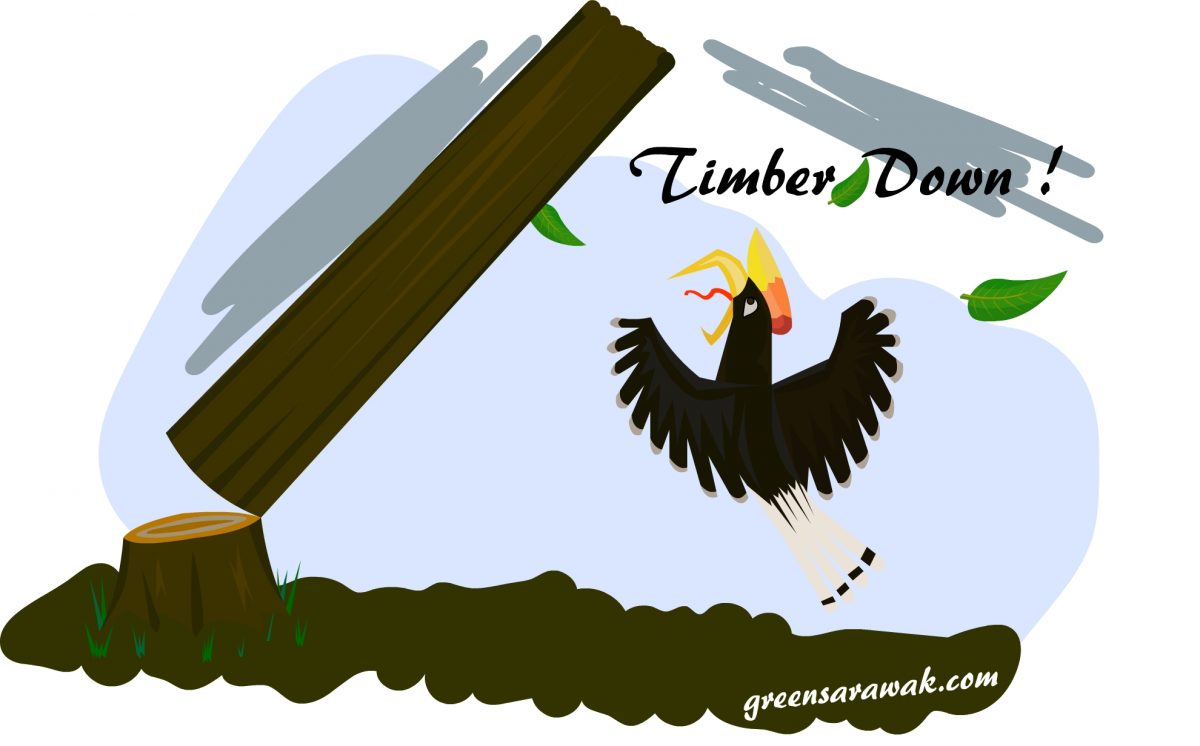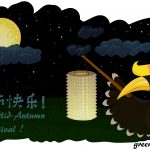It is easily to be seen from a naked eyes that when you cut down a rainforest tree, you gain a timber. But is life so easy as 1+1=2 ? Let’s find out the maths. You will be surprised to know that the short and long term environmental effect of one timber down.
Timber down
Timber which are called Lumber in some parts of the world. It can means preprocessed piece or wood before milled into planks and beams. However locally we regards timber as logs that had been harvested from a whole tree.
During logging, a tree is carefully sawed at the bottom at an angle that can tip the balance of the tree, until they collapsed aside due to shift of gravity and fell down to the ground in a loud thump. Timber down. That’s what they usually called.
It looks simple from a naked eye, one tree is down. But is it so ?
A fully grown Rainforest tree is usually very tall and straight upward to the canopy where they started to branch out forming a tall umbrella like structure. Each of these trees weights tons.
During a timber down, the seer weight and momentum crashes down like a plane, created earth shocking moment during the touch down. During this moment, other smaller trees around the big trees will be crashed to the ground due to its massive weights. Usually one timber down will crash at least 5 smaller trees, more so if it is a bigger tree.
Smaller trees that survive the crash will be either crooked or bent, which creates a least favorable condition to growth.
So in the beginning we lost not only one tree.
The Subsequent Events
Whats next ? The timber log will be saw off at both ends, to create a standard length of log for transportation. The huge canopy that had been cut off will shade many other smaller plants in the vicinity, depriving these plants and seedlings from sunlight and compressed by fallen branches and leaves.
What if that fall don’t kill them ? The haversted tree will have a huge root stump left at the vicinity, waiting to die off and rot. Rotten woods will attract other wood pest like termites that can borrow along dead roots into deeper layer.
The stories doesn’t stop there. Many logging trails must be created just to transport this piece of log to the nearest collection point and export channels. More trees are lost along the way.
Before we able get to the other part of the story, we already lost so many trees and plants just from one Timber.
So it is never easy to say that we had cut off X numbers of trees and hence we only lost X numbers of trees.
It is all about what is hidden in the fine print that change the whole point of view of the subject.
The Improvement in Logging Technology
When you can’t save every single trees when you need the Timber resources, but with advancement in technology, we can minimize the damage to the environment during the progress of logging.
Traditionally Bulldozer and excavator is the main machinery during harvesting the timber, but it had prove to create too much damage during transferring the logs from the harvest location to the nearby truck transport. While pushing the logs across the floor, many trees and vegetations are harmed.
Newer forest harvester and logfisher are improvised to reduce the harm to the surrounding trees during log transfer. These specialize machines have grapper (like robotic grasp) that can hold the log above the ground and transfer them without excessive dragging on the ground.
It may have pulley system like the method used in cable-logging. The log is pull across the ground via a long cable to the nearby truck. It reduce the damage by not sending in heavy machinery into the logging site.
There are method to logging without even have the log have a direct contact with the surrounding ground, such as heli-logging, which using Tandem Rotor Helicopter to hang up the logs across the forest to the nearby truck. However it is still an expensive alternative.
More innovation will be coming soon in having logging industry to be as environmentally friendly as possible.





